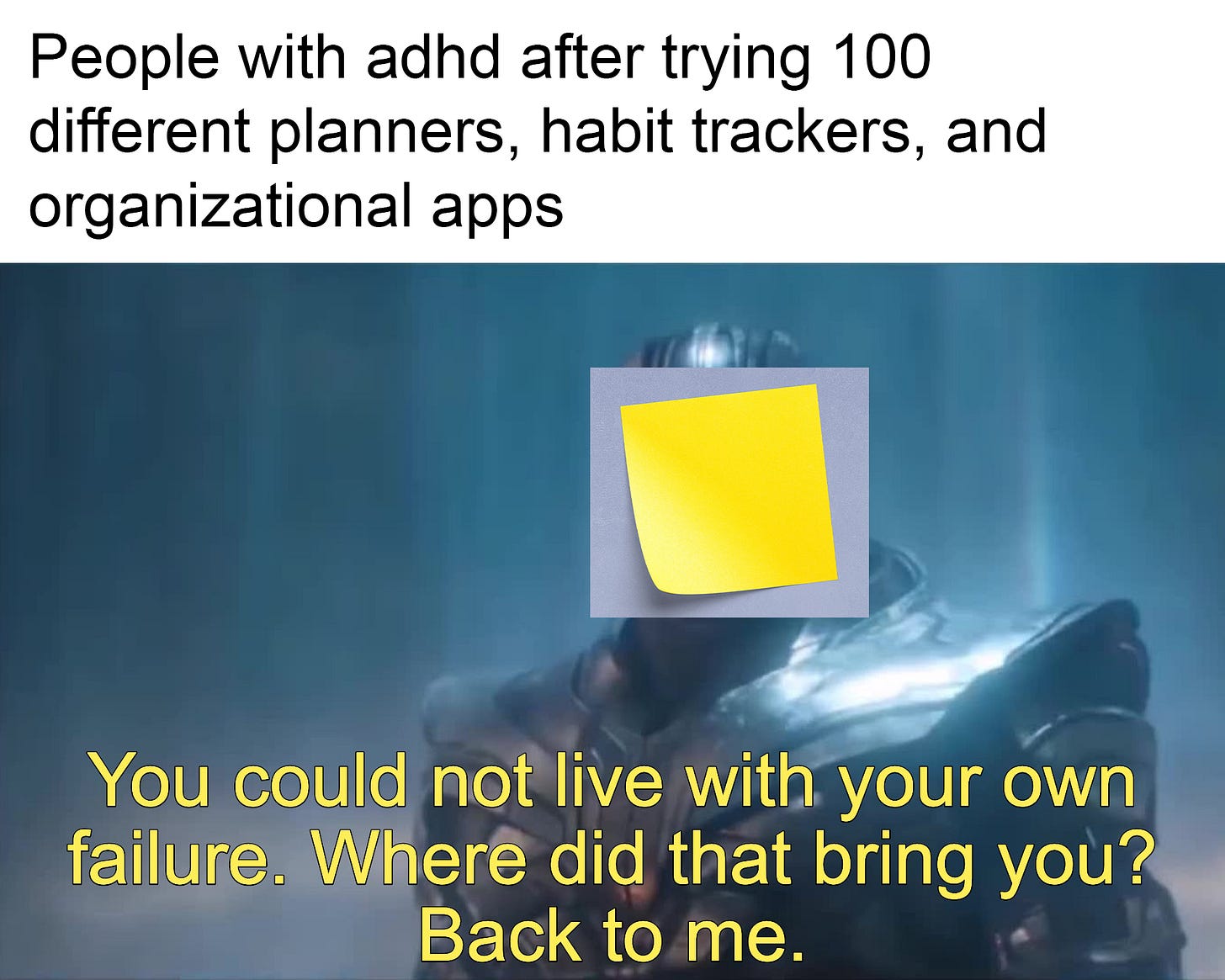What is an ADHD Technology?
you tell me!!
You may have noticed that I’ve been stuck talking about technology for a while — this is not a tech publication, it’s just that technology is culture is society, so it’s a bit impossible to write about disability and the social world without writing about tech.
I keep going back to Shew’s Against Technoableism — there’s a chapter on neurodiversity where she describes a panel discussion on tech amongst autistic people, quoting philosopher of technology Damien P. Williams:
Williams explained for the panel that 90 percent of technological interventions for autism have been targeted toward social skills—digital experiences meant to “train normative social interaction.” They explained that this type of intervention leads to high levels of suicidality among autistic people:
“When the vast majority of our intervention, and in particular, our technological intervention for autism is targeted at social skills, we’re basically producing the suicidality of autistic children.”
Williams envisions approaches that flip the tables and center autistic norms and culture in how we approach making technologies. They are putting forward proposals where autistic kids direct designers about what works for them (centering what the kids want to work on and goals they have, not the ones researchers have).”
As examples of potential ‘autistic technologies,’ the panelists brought up games like Pokemon, Dungeons and Dragons, and The Sims, which facilitate more autistic styles of socializing and connecting to others.
Likewise, most tech for ADHD is aimed at increasing productivity and organization along neuronormative lines that generally don’t work for us. (Just make a schedule! Just set a timer! Just just just!) Because of this, many of us seem to get stuck in a constant cycle of trying and failing, over and over and over.
You know, the enduring hope that this app/planner/smartwatch is going to finally fix me, and the inevitable forgetting that said app/planner/smartwatch even exists!1 It’s a painful cycle of chronic failure that can also make you want to exit Earth stage left.
I’ve come to the realization, after being tormented by my own failures to function executively for a very long time, that being ‘fixed’ is an ableist pipe dream when so many of my problems as a disabled person stem from a misfit between my body and the built world. The task of a misfit is not to try and fail endlessly to somehow fit, but to develop alternative methods.2
As Shew points out, disabled people need, use, and benefit from technology, just like everyone else — the issue is whose goals and problems that technology is meant to solve, and who owns and profits from it.
So, I’ve started wondering: what is an ADHD technology?
I would love for my ADHD readers to think through some things in the comments with me:
What are your goals in using tech, and how do they differ from neuronormative productivity goals?
What tech do you find helpful for reaching these goals?
How does your style of functioning differ from linear, clock-timed, top-down neurotypical functioning? Are there any neurotypical technologies that you’ve ‘hacked’ to use in your own ways?
Who profits from the tech you find helpful? Can you imagine some ADHD technologies that could be democratically, collectively owned or open-source, and not ultimately benefit the shareholders?
my first week wearing a smartwatch, i thought i was soo organized. one night, i put it on the charger so i could wear it to sleep, but when i woke up in the morning with it on my wrist, it was fully dead. that’s weird. i thought, and went downstairs to my desk to put it on the charger again. but an hour later, it still wasn’t charging. so i went to Gray and said, i think my watch is broken. Gray is better at fixing tech things than me, so they went to check. i was panicking a little, having already grown quite fond of my new external working memory and interoception visualizer. how am i going to remember to let the dogs out today? how am i going to know how fast my heart is beating?? then Gray texted me a video from the other room, following the cable to its source: do you think this could be the problem? it wasn’t plugged into the wall. 🫠🫠🫠
see: Rosemarie Garland-Thompson on misfitting and feminist materialism



Imo ADHDers need minimum technology (at least anything with a screen that’s addictive) and more community. Being outdoors, moving the body, living in community. Where you do chores together and don’t need to be good at planning cause someone else will. And we can do the things we’re good at.
I think ADHDers just show how dysfunctional and absurd the modern way of being is. We‘re not meant to live in isolation and we cope with it worse than NTs.
I enjoy using tech that doesn’t try and force fit me into a structure that makes me want to smash things up as a result of my not being able to make use of it. For example, ‘Evernote’ works for me as a way of making notes and keeping records because it supports my inner chaos in a sympathetic and non-judgmental way (yes, as an AuDHDer, I also tend to anthropomorphise everything)